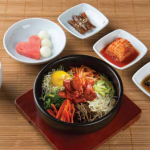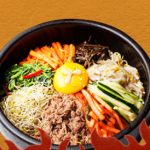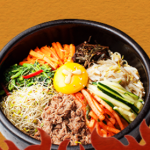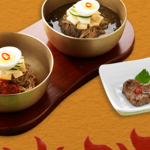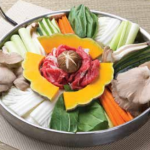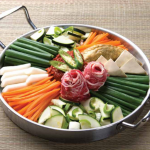If you’re a fan of bold flavors that set your taste buds ablaze, then Korean cuisine is a spicy paradise you don’t want to miss. Known for its fiery kick, Korean dishes often leave diners reaching for their water glasses in awe. But have you ever wondered how the spiciness level in Korean dishes compares to other international cuisines? Let’s dive into the world of spices and explore why Korean food stands out as a beacon of heat amidst its global counterparts.
A Tale of Spice and Tradition
Spiciness has been an integral part of Korean cuisine for centuries, evolving alongside the nation’s rich gastronomic heritage. Unlike in Western cuisines, where spices are often used sparingly, Korean dishes embrace this powerful flavor profile as a central component. Notably, the Korean chili pepper, also known as gochugaru, holds a revered status among Korean cooks and food lovers alike. Its vibrant red color and distinct heat level make it a staple in many Korean recipes.
Spicy Scale: A Linguistic Adventure
In the realm of spicy foods, different cultures have their own unique ways of measuring heat levels. In Korean cuisine, a common term used to describe spiciness is “maewoon” (매운), which literally translates to “spicy” in English. It sets the stage for a heat explosion that ranges from mild to intense, catering to various taste preferences.
However, it’s worth noting that the Korean spiciness scale may be considerably higher than what many international cuisines offer. While Korean dishes are celebrated for their flavorful stews like Kimchi Jjigae and fiery stir-fried chicken known as Dakgalbi, they often excel in pushing the boundaries of spiciness. So, if you’re not accustomed to the heat, be sure to proceed with caution!
“Pedas”: The Spicy Language of Malaysian Cuisine
As we venture beyond Korea, let’s explore the vibrant Malaysian culinary landscape, where “spiciness” is commonly referred to as “pedas.” Malaysian cuisine, which takes influences from Malay, Chinese, and Indian cultures, knows how to infuse heat with finesse. With a variety of spices like chili, turmeric, and cloves, Malaysian dishes like the beloved Nasi Lemak or fiery Rendang offer a balanced blend of flavors, elevating the entire dining experience.
The Global Spice Ultimatum
When it comes to comparing spiciness levels across different international cuisines, it’s essential to acknowledge that tastes are highly subjective. What one person may perceive as a mild heat, another might find unbearably scorching. However, if we were to venture into the world of spices and navigate through the diverse culinary landscapes, it’s safe to say that Korean cuisine sits on the spicier end of the spectrum.
In Conclusion: Korean Cuisine Reigns Supreme in the Spice Arena
With its bold flavors and fiery kick, Korean cuisine undoubtedly takes the crown when it comes to spiciness. Whether you’re a fan of scorching hot soups, lip-tingling stir-fries, or simply craving a taste of Korea’s vibrant culinary heritage, be prepared to embark on a thrilling ride for your taste buds!
FAQ
Q1: Are all Korean dishes extremely spicy?
* While many Korean dishes are known for their spiciness, not all of them will blow your socks off. There are milder options available for those who prefer less heat, such as Bibimbap or Japchae.
Q2: Are there any other cuisines renowned for their spiciness?
* Absolutely! Cuisines like Thai, Indian, and Mexican also have a reputation for their spicy dishes. Each offers a distinct blend of flavors and unique levels of spiciness to cater to different palates.
Q3: I love spicy food but can’t handle extreme heat. Any Korean recommendations?
* If you’re looking for a more manageable level of spiciness, try dishes like Tteokbokki (spicy stir-fried rice cakes), which offer a delicious kick without overwhelming your taste buds.
Q4: How can I build up my tolerance for spicy food?
* Gradually exposing yourself to spicier foods can help increase your tolerance over time. Start with milder dishes and gradually work your way up to more intense flavors. And don’t forget to have a refreshing drink nearby, just in case!
Q5: Is there a code of conduct when it comes to eating spicy food in Korea?
* Yes, indeed! In Korean dining culture, it is customary to eat the spicy dishes slowly and savor the flavors. It’s also common to pair spicy dishes with a bowl of rice or a refreshing side dish to balance the spiciness.
So, whether you’re a spice enthusiast seeking a new culinary adventure or someone simply curious about the world of spicy food, Korean cuisine won’t disappoint. Embrace the challenge, savor the bold flavors, and enjoy the rollercoaster of spiciness that will undoubtedly set your taste buds on fire!


